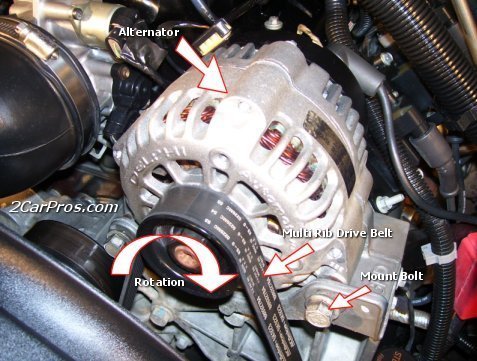Can you post a photo of your meter? If it has ohms, it most likely has DC volts too. What I have to do for things I draw in MS Word is to copy and paste it into MS Paint, then when I save it, I have to click on "JPEG" in the "file type" drop-down menu. I haven't tried posting photos yet but I think they will already be saved as a JPEG file. I used to get error messages when I tried to post non-JPEG files.
If you do need a different meter and have a Harbor Freight Tools store near you, they have a perfectly fine one that's always on sale for around $6.99 and sometimes as low as $2.99. Due to the nature of the circuit we're working in, a test light will often be more accurate, not in measuring the specific voltage, which will come later, but in determining whether or not there is SOMETHING there. Walmart, Sears, Radio Shack, and any auto parts store will also have meters but you're going to pay for features you'll never use. I have over a dozen digital meters that I use for tv and car radio repair, and only one cost more than 40 bucks. That expensive meter has fewer functions than my cheap meters; it's just much more accurate.
Most meters have voltage ranges that go by "2", "20", and "200" steps. That means if you set it on the "20" volt DC scale, it will read anything up to 20 volts with at least one decimal place accuracy. When you verify charging system operation later, you'll need that tenth of a volt. There are a few hard-to-find meters that have "1", "10", and "100" volt scales. The ten volt scale will give the same accuracy but it will go "over range" when it measures more than 10 volts. It won't hurt the meter, but that means to get a reading you have to switch to the "100" volt scale, then you lose that decimal place of accuracy. Most meters have the "2, 20, 200" volt scales.
I just looked at my van. There are indeed two studs on the front of the fuse box. The one closest to the inner fender connects right to the battery positive. The other one goes to the alternator output terminal. If you follow that fat red wire, you'll come to the dark green fuse link that's spliced in. It's right behind the battery tray, in the middle, and an inch below it. I checked in the service manual, and it looks like that fuse link doesn't connect to anything else in the vehicle other than the alternator, so nothing else would be affected if that link was burned open. To test it you have to tug on it. If it acts like a wire, it's okay. If it acts like a rubber band, it's burned open and must be replaced.
Those fuse link wires are really tough, and the splices are sealed in waterproof heat-shrink tubing so they aren't likely to corrode. To cause one to burn open, at least two of the six diodes in your old alternator would have to have shorted, (not very likely), or the output terminal touched ground while the battery was still connected. Using a wrench to loosen the nut, and the wrench touched the metal mounting bracket would do it, but first you'd see lots of sparks there.
The fuse link is a regular wire but it's smaller in diameter than the rest of the wire so it's the weak link in the chain. In addition, the insulation is designed to not burn or melt. For that reason they must not be replaced with a regular wire of the same gauge. You can buy new fuse link wires from auto parts stores or the dealer. One person demanded to know the current rating before going to the store, but I've always bought them according to color of the insulation. No salesman ever asked me what current rating I wanted. You'll get a piece of wire long enough to be cut for multiple repairs. You don't have to put the whole piece in.
Since your new alternator worked for a little while, it's highly doubtful the fuse link is burned open. I really suspect with a good meter or a test light you're going to find voltage on the output terminal.
Saturday, December 10th, 2011 AT 11:03 PM



